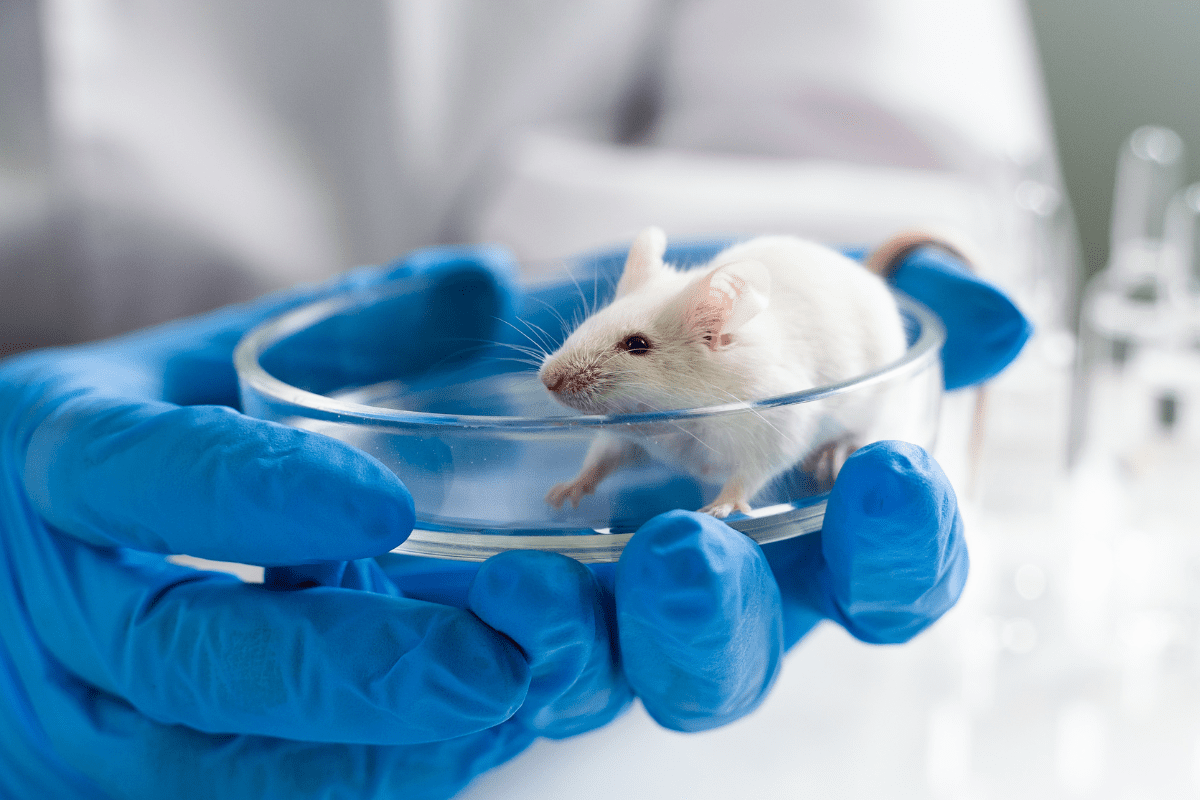
Have you ever wondered how researchers can cause mice to have a condition that is similar to multiple sclerosis when they don’t know what causes MS? Yet after decades of research, we are still no closer to knowing the cause of multiple sclerosis and there is still no cure.
MS animal studies may be useful for pharmaceutical companies to test new drugs, but many would argue that these studies hinder us from finding a cure.
Multiple sclerosis is an inflammatory disease and the result of this internal war is damage to nerves and the protective myelin layer around them.
There are Four Types of MS:
• Clinically Isolated Syndrome
• Relapsing-remitting MS
• Secondary progressive MS
• Primary progressive MS
Research funded by pharmaceutical companies use animal models to test potential new disease modifying drug (DMTs) treatments for MS. Animals provide a convenient source of central nervous system (CNS) tissue. Human tissues, biopsies or autopsy samples are rarely performed.
Several researchers have questioned whether animal models accurately represent MS since they don’t reflect many of the aspects of multiple sclerosis in humans such as:
- The way in which disease is artificially initiated in animals – by injecting various fragments from the CNS, toxins or a virus into the animals.
- The time-frame from the first symptoms is different between humans and mice. In humans, the start of MS can go undetected for years before diagnosis, while symptoms in animal models can be detected within weeks or days after disease is initiated.
- Drug testing starts very early in the animal models while DMT therapies for humans is given later after diagnosis.
- Most of the experimental studies use inbred, genetically modified strains of mice that are genetically similar and often have several genetic abnormalities that are not found in humans.
- Rodent and human immune systems have profound differences.
Three common animal models for studying MS:
- Experimental autoimmune/allergic encephalomyelitis (EAE)
- A viral induced chronic demyelinating disease known as Theiler׳s murine encephalomyelitis virus (TMEV) infection
- Toxin-induced demyelination
Immunizing lab animals with fragments from the CNS like PLP, MOG, etc. are often used to cause nerve inflammation, nerve damage and demyelination. Other substances may be added to produce more severe or prolonged neurological responses such as immunizing with pertussis (a toxin produced by whooping cough), Freund’s adjuvant (contains killed tuberculosis bacteria) or chemicals like Lysolecithin or Cuprizone which destroy cells in the nervous system.
Mice used in MS animal models are genetically modified and more susceptible to certain diseases.
SJL/J Mice
SJL/J mice have a very high risk of developing reticulum cell sarcomas at about one year of age. This cancer resembles Hodgkin’s disease which is a cancer found in certain cells in the spleen, lymph nodes or microglial cells of the brain. This strain of mouse also shows extreme aggression in males and is susceptible to EAE for MS research.
Characteristics of five mouse models of multiple sclerosis:
1. Relapsing–remitting EAE in SJL/J mice
- Immunize SJL/J mice with the myelin fragment PLP
- Observe neuroinflammation and immune system activation
- Involved cells – CD8, CD4, Th17, monocytes, macrophages, B cells, Treg cells
- Study relapsing–remitting MS, relapse rate and new therapeutical agents
2. Chronic EAE in C57BL/6J mice
- Immunize mice with myelin fragment MOG in Freund’s adjuvant and pertussis toxin
- Observe neuroinflammation and immune system activation
- Involved cells – CD8, CD4, Th17, monocytes, macrophages, B cells, Treg cells
- Study primary progressive MS, secondary progressive MS and new therapeutical agents
3. EAE in transgenic mice
- Immunize mice with myelin fragment myelin fragment MOG or IgH MOG
- Observe neuroinflammation and immune system activation
- Involved cells – CD8, CD4, Th17, monocytes, macrophages, B cells, Treg cells
- Study of immune cell activation and function
4. Theiler׳s murine encephalomyelitis virus (TMEV)
- Immunize mice with picornavirus, such as Theiler׳s murine encephalomyelitis virus (TMEV)
- Study nerve damage and inflammatory-induced demyelination
- Involved cells – Macrophage/microglia, oligodendrocyte (myelinating cells), astrocytes (cells that support the nerve cells) and CD4, CD8
- Study primary progressive MS, study of brain, brainstem and spinal cord lesions and new therapeutic approaches
5. Cuprizone-induced MS
- Feed C57BL/6 mice with 0.2% cuprizone for 6 weeks. Cuprizone is a copper chelating agent that is given orally to mice to induce oligodendroglia death, glial cell activation and demyelination via mitochondrial dysfunction.
- Observe de- and re-myelination processes
- Cells Involved – Oligodendrocytes, astrocytes, microglia
- Study new drug therapies
6. Lysolecithin-induced MS
- Inject lysolecithin (toxic to myelin) in SJL/J mice
- Observe de- and re-myelination processes
- Cells Involved – Oligodendrocytes, astrocytes, microglia
- Drug study trials designed to suppress demyelination or accelerate re-myelination
The following are just a few limitations of using animal model of MS:
- There are major differences in how the diseases EAE and MS develop
- The EAE animal model provides very little if any information about MS progression
- These animal studies don’t provide an accurate study of relapse rate in MS
- It is difficult to study re-myelination in EAE, and insights into the processes of myelin damage in EAE tissues had not been done at the time of this study
- Studies designed to evaluate possible benefits of new MS drugs on nerve growth and survival has been unsatisfactory, as most of the results were off-target, making any results difficult to interpret
- EAE mainly affects the spinal cord white matter, whereas MS is mainly a brain disease with prominent demyelination of the cerebral and cerebellar cortex. Unfortunately, very few studies analyzed the involvement of the cortex in EAE
- Nerve damage occurs in MS and the EAE animal model. With MS, it is believed that nerve damage occurs after demyelination, where lesions develop from the outside (myelin) to the inside (nerve)
- With the TMEV viral infection animal model, nerve damage happens before demyelination which is the opposite of MS
- TMEV can induce inflammatory demyelinating disease only in mice and does not cause disease in humans. This has raised the question whether it is wise to use a non-human virus to study a human disease like MS
- The disease process of TMEV-induced demyelination in mice is different from human MS, where persistent viral infection of the CNS has not been observed.
Immunizing genetically modified and immunosuppressed mice with toxins, viruses and fragments from the CNS to cause nerve damage and demyelination may be helpful for developing new MS drugs designed to suppress our immune system, but this type of research will not lead to each a cure.
The development of these drugs is very lucrative. Many of the newer MS drugs are billed out at over $100,000 per year. There is no incentive to cure people.
There is a large and ever growing body of scientific evidence that supports that multiple sclerosis is an infectious disease. MS research should be focused on identifying which parasites are causing MS. We need better tests to identify the parasites that cause MS and practitioners who are skilled at treating them effectively.
We must also be very careful which type of MS research we support.
There are real solutions to recover from parasites today!
To restore health, we must focus on treating the cause of inflammation, which are parasites. First, identify the enemy (parasites), then support the body and treat the parasites while following a holistic approach. When parasitic infections are treated effectively, we can overcome inflammation or disease.
If you’re frustrated with the fact that our standard of care STILL doesn’t offer a real solution for treating MS or other diseases, then click on the link below to watch Pam Bartha’s free masterclass training and discover REAL solutions that have allowed Pam and many others to live free from MS.
CLICK Here to watch Pam’s masterclass training
References:
[ii] https://www.ncbi.nlm.nih.gov/pmc/articles/PMC7094661/
[iii] https://www.ncbi.nlm.nih.gov/pmc/articles/PMC7094661/
https://www.jax.org/strain/000686

Clinically diagnosed with multiple sclerosis at the age of 28, Pam chose an alternative approach to recovery. Now decades later and still symptom free, she coaches others on how to treat the root cause of chronic disease, using a holistic approach. She can teach you how, too.
Pam is the author of Become a Wellness Champion and founder of Live Disease Free. She is a wellness expert, coach and speaker.
The Live Disease Free Academy has helped hundreds of Wellness Champions in over 15 countries take charge of their health and experience profound improvements in their life.

